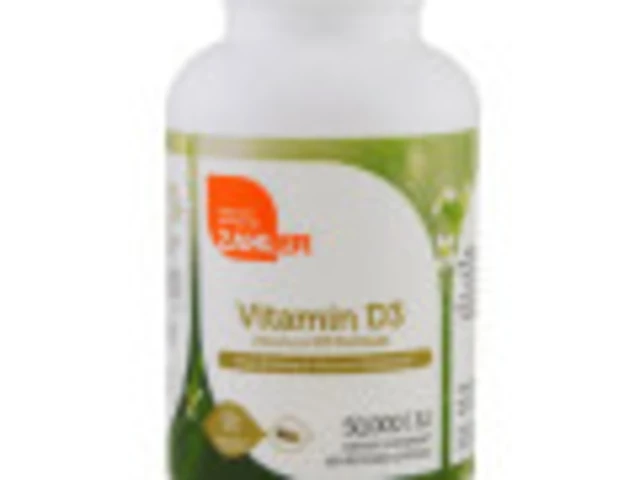Understanding Adapalene and Its Benefits
Adapalene is a third-generation retinoid that has been proven to be effective in treating acne in individuals with darker skin tones. As a synthetic retinoid, adapalene works by regulating the growth and shedding of skin cells, which helps to unclog pores and reduce inflammation. This section will provide an overview of adapalene and its benefits, including its ability to treat acne, minimize scarring, and improve overall skin texture.
Adapalene is available in various forms, such as gels, creams, and lotions, making it easy to incorporate into any skincare routine. Additionally, adapalene has been shown to be less irritating than other retinoids, which is especially important for those with sensitive skin or darker skin tones who may be more prone to irritation and hyperpigmentation.
Addressing the Unique Concerns of Darker Skin Tones
When it comes to treating acne on darker skin tones, it's essential to consider the unique concerns and challenges that may arise. Darker skin tones are more prone to hyperpigmentation, scarring, and inflammation, which can make acne treatment more complicated. This section will discuss these concerns and how adapalene can help address them effectively.
One of the main benefits of adapalene for darker skin tones is its ability to reduce inflammation and prevent the formation of new acne lesions. This is particularly important for those with darker skin tones, as inflammation can lead to post-inflammatory hyperpigmentation (PIH) and scarring. By minimizing inflammation, adapalene helps to prevent these unwanted side effects and promote a more even skin tone.
How to Use Adapalene for Maximum Effectiveness
In order to achieve the best results with adapalene, it's crucial to follow proper usage guidelines. This section will provide detailed instructions on how to use adapalene effectively, including tips for incorporating it into your skincare routine, choosing the right product, and managing potential side effects.
When using adapalene, it's important to start with a low concentration and gradually increase as your skin adjusts. Applying a pea-sized amount to clean, dry skin once a day, preferably in the evening, is typically recommended. It's also essential to use sunscreen during the day, as adapalene can increase your skin's sensitivity to the sun. Additionally, be patient and consistent with your adapalene use, as it can take several weeks to see noticeable improvements in your skin.
Combining Adapalene with Other Acne Treatments
While adapalene can be highly effective on its own, it may also be beneficial to combine it with other acne treatments for even better results. This section will explore different acne treatments that can be used alongside adapalene, as well as how to incorporate them into your skincare routine safely and effectively.
Adapalene can be used in conjunction with other acne treatments, such as benzoyl peroxide, salicylic acid, and topical antibiotics. However, it's important to introduce these products gradually and monitor your skin's response to avoid over-irritation. Consulting with a dermatologist can help you determine the best combination of treatments for your specific skin concerns and ensure that you're using them safely and effectively.
Real-Life Success Stories with Adapalene
Many individuals with darker skin tones have experienced significant improvements in their acne and overall skin health after incorporating adapalene into their skincare routine. This section will share real-life success stories from those who have used adapalene, highlighting their experiences and the results they've achieved.
These success stories serve as a testament to the efficacy of adapalene in treating acne on darker skin tones, providing hope and inspiration for others who may be struggling with similar issues. By sharing these experiences, we can help to spread awareness about the benefits of adapalene and encourage more people to consider this treatment option for their acne concerns.
Consulting with a Dermatologist for Personalized Advice
While adapalene can be an effective treatment option for many individuals with darker skin tones, it's important to consult with a dermatologist for personalized advice and recommendations. This section will discuss the importance of professional guidance when it comes to treating acne and how a dermatologist can help you determine the best course of action for your unique skin concerns.
A dermatologist can assess your skin type, the severity of your acne, and any other underlying factors that may be contributing to your breakouts. Based on this assessment, they can recommend the most appropriate treatment options for your specific needs, including whether adapalene may be a suitable option for you. Additionally, a dermatologist can provide ongoing support and guidance throughout your acne treatment journey, helping to ensure the best possible results for your skin.






Simon Waters
April 28, 2023 AT 00:06They don't tell you that the big pharma companies push adapalene because they want you to buy more stuff. It's just another way to keep us dependent.
Vikas Kumar
May 3, 2023 AT 07:53Our own doctors should prescribe natural remedies, not foreign chemicals.
Celeste Flynn
May 8, 2023 AT 15:40Adapalene works by normalizing keratinocyte turnover it reduces clogged pores and inflammation helps with post‑inflammatory hyperpigmentation
Shan Reddy
May 13, 2023 AT 23:26I’ve tried the 0.1% gel on my own skin and the irritation was minimal, so it’s a good starter for darker tones.
CASEY PERRY
May 19, 2023 AT 07:13Adapalene modulates retinoic acid receptor‑γ signaling, thereby attenuating comedogenesis and inflammatory cascades.
Naomi Shimberg
May 24, 2023 AT 15:00While the literature lauds adapalene’s efficacy, one must consider the underlying bias of pharmaceutical sponsorship which may compromise objective assessment.
kenny lastimosa
May 29, 2023 AT 22:46If acne is a symptom of deeper imbalance, perhaps treating the surface alone overlooks the true cause, yet the consistency of adapalene offers a pragmatic compromise.
Heather ehlschide
June 4, 2023 AT 06:33For best results, apply a pea‑sized amount at night after cleansing and follow with a broad‑spectrum SPF of at least 30 during the day.
Kajal Gupta
June 9, 2023 AT 14:20Honestly, the gel feels like a cool breeze on your face – super light and it actually fades those dark spots without the dreaded orange tint!
Zachary Blackwell
June 14, 2023 AT 22:06Did you ever notice how the same brand that sells hair loss pills also pushes adapalene? They’re building a monopoly on every skin concern, folks.
prithi mallick
June 20, 2023 AT 05:53i think it helpss alot but you have to be patient it can takke a few weeks before seeing the change do not give up
Michaela Dixon
June 25, 2023 AT 13:40Adapalene’s mechanism is fascinating; it binds to nuclear retinoic acid receptors and modulates gene transcription, leading to normalized keratinocyte differentiation. This reduces the formation of micro‑comedones and diminishes the inflammatory cascade that drives papules and pustules. Because the drug is a third‑generation retinoid, its affinity for the receptor is enhanced, which often translates into better tolerability compared to older retinoids. Users with darker skin tones particularly benefit from the lower irritation profile, as any inflammation can precipitate post‑inflammatory hyperpigmentation. When applied in the evening, the molecule is stable enough to avoid photodegradation, although sunscreen during daylight remains essential. A pea‑sized amount is sufficient for the entire face; over‑application does not increase efficacy but may raise the risk of dryness. Initial side effects such as mild erythema and scaling are common but typically subside within two to three weeks as the skin adapts. Combining adapalene with a non‑comedogenic moisturizer can mitigate these early reactions without compromising its therapeutic action. In clinical studies, patients have reported a statistically significant reduction in lesion counts after eight weeks of consistent use. Moreover, the drug’s anti‑keratinizing effect helps fade existing hyperpigmented spots over a longer period. It is advisable to avoid concurrent use of harsh physical exfoliants during the induction phase, as this can exacerbate barrier disruption. Many dermatologists recommend a gentle cleanser and barrier‑repairing ceramide creams alongside adapalene. While the drug is available over‑the‑counter in many regions, consultation with a dermatologist remains valuable for personalized concentration adjustments. Some patients may benefit from a 0.1% formulation initially, stepping up to 0.3% as tolerance builds. The key to success is patience; visible improvement often takes 12‑16 weeks, especially for those dealing with stubborn post‑inflammatory marks. Overall, adapalene represents a balanced approach to acne management, offering efficacy, safety, and suitability for a diverse range of skin types.
Dan Danuts
June 30, 2023 AT 21:26Your dedication to understanding the science is inspiring and will definitely pay off when you see clearer skin soon!
Dante Russello
July 6, 2023 AT 05:13Remember, consistency is key; keep your routine steady, avoid over‑scrubbing, and always protect your skin with sunscreen!
James Gray
July 11, 2023 AT 13:00Totally agree man its all bout stayin consistent and use that sun screen
Scott Ring
July 16, 2023 AT 20:46I’ve seen friends from different backgrounds benefit from adapalene, especially when they pair it with gentle moisturizers.
Shubhi Sahni
July 22, 2023 AT 04:33Indeed, combining it with a non‑comedogenic moisturizer can further reduce irritation, making the regimen more sustainable!
Danielle St. Marie
July 27, 2023 AT 12:20👏 wow, looks solid.
keerthi yeligay
August 1, 2023 AT 20:06Try a low dose first and give it 8 weeks before judging the results.